August 2025 Newsletter
Defining Legacy
A Note from Lauren Bennett Hersh, Philanthropic Advisor

At Gulf Coast, I have the privilege of working with donors who are exploring how the Foundation can support their long-term philanthropic goals. Many choose to establish Endowed Funds that provide lasting support for the causes they care about most. I also assist with giving strategies like Donor-Advised Funds, RMDs, and Charitable Gift Annuities.
What I value most in this role is helping individuals and families define what legacy means to them. These are often thoughtful conversations rooted in core values and philanthropic priorities.
I’m also grateful for the trusted relationships Gulf Coast shares with Professional Advisors. When you introduce a client to us, it opens the door to meaningful, values-based planning. In many ways, we serve as a back office for the philanthropic side of your client strategies—offering expertise and support that complements your work.
As the daughter of a retired trust and estate attorney, I’ve been around conversations about charitable gift planning since an early age. That foundation shaped how I approach this work—with a long view and deep respect for the trust placed in us.
With August recognized as Make-a-Will Month, it’s a timely opportunity to reflect on how legacy gifts can create lasting impact. I work closely with colleagues across the Foundation to help ensure each donor’s intent is honored—now and for generations to come.

IRA POWER PLAY:
Creating a Charitable Legacy with QCDs
QCDs and Endowed Funds: A Powerful Legacy Planning Combination
Since 2006, Qualified Charitable Distributions (QCDs) from IRAs have offered individuals aged 70½ and older a tax-efficient way to support the causes that matter most to them. As rules around charitable deductions grow increasingly complex, QCDs remain a reliable and impactful planning strategy for charitably inclined clients.
For many donors and advisors, the QCD conversation begins and ends with a direct gift to a favorite nonprofit. However, at Gulf Coast, we work with donors and their advisors to take that generosity further—by creating Endowed Funds that can support one or more charities in perpetuity.
Establishing an Endowed Fund through a QCD allows your clients to create a living legacy. These funds can be further supported through additional contributions during life or through estate gifts, ensuring long-term impact and sustained support for the organizations they care about most.
Whether it’s a designated fund for specific nonprofits, a field-of-interest fund supporting broader causes, or a scholarship fund providing opportunity for deserving students, Gulf Coast offers flexible options to meet your clients’ goals.
The key to unlocking these opportunities lies in asking the right questions. For example: “Are you interested in having a more immediate impact with the causes you care about, or do you prefer a longer-term approach with generational impact?” This simple conversation starter can help identify whether a donor’s philanthropic intent is short-term or legacy-focused—guiding you toward the most appropriate fund type.

QUIET TYPES:
Spotting Clients Who Prefer Anonymity
As you engage in conversations about charitable giving with your clients, a crucial question often comes to the forefront: How do they want their contributions to be acknowledged and recognized?
Many private foundations have found that establishing a Donor-Advised Fund (DAF) is a great way to provide grants to organizations while maintaining anonymity. For example, a grant could be made to the DAF and then distributed from the DAF to the intended organization. The reporting on the 990 will show a grant to the recipient organization, such as Gulf Coast, with no further explanation, preserving the donor's anonymity.
Keep an eye out for the following client comments:
“We don’t want to get a ton of requests for charitable gifts. Once you make a gift, it seems like your name is broadcast all over town and we could receive more requests that we want. It’s overwhelming and it makes us feel bad that we can’t do it all.”
In today’s challenging economic environment, understandably, nonprofits often increase outreach efforts to ask for support. Through a Donor-Advised Fund, your client can recommend a grant AND the extent to which personal information is shared with recipient organizations. In many cases, our team can customize outgoing communications to nonprofits while also ensuring that your clients receive meaningful updates (such as thank you notes, impact reports, and success stories).
“We don’t want our colleagues, friends, and even some of our family members to be able to see how much we give or where we give it.”
Some clients value privacy and choose to keep their giving and financial capacity under the radar. Donor-Advised and other fund information remains highly confidential. Unlike private foundations, which require public reporting, donor-advised and other types of funds at Gulf Coast can help keep donor identities, grantee identities, and fund balances private.
“We want to make a big difference, but we want to do it without drawing a lot of attention to ourselves.”
For some donors, charitable giving is about honoring a loved one or building a family legacy, rather than personal recognition. These donors may want to make grants in a different name—such as a family name or in memory of someone significant. Working with Gulf Coast, whether it’s through a Donor-Advised or other type of fund, offers your clients a great deal of flexibility in how a family’s gifts will be recognized. Your clients can pick and choose which gifts they want to make public and which they want to keep anonymous. Clients can also make gifts that are publicly announced in honor of family members or using a generic foundation name.

GIFTS OF ARTWORK:
Worth a Look, but Be Careful
If you’ve noticed a surprising uptick in recent years among your younger clients investing in artwork, it is not your imagination! A survey of 1,007 U.S. high net worth individuals (each with at least $3 million in investable assets) found that 83% of respondents aged 43 and under said they currently own or would like to own art—compared with only 34% of those older than 43.
As you work with this subset of clients who are also charitably minded, you’ll want to be generally aware of the rules surrounding gifts of artwork to charity. When handled appropriately, artwork donations can provide notable benefits for both your client and favorite causes. The process for these gifts, however, comes with unique complexities, ranging from a client’s emotional attachment to the IRS’s watchful eye on donations involving historically misvalued or fraudulent art gifts.
Here are three ways to approach helping a client leverage an investment in artwork for charitable purposes:
The client donates the artwork directly to a charity for “related use.”
If your client donates art held for more than one year directly to a museum or institution that uses it as part of its mission (for example, displaying the art in public collections or exhibitions), the charitable tax deduction can be based on the fair market value at the time of the gift, which could deliver a significant upside for your client. “Related use” rules are strict. The artwork must enhance or be central to the organization’s mission. Donated pieces valued over $500 require your client to file an IRS Form 8283, and gifts valued over $5,000 also require a qualified appraisal. Note also that if the charity sells the piece within three years of making the gift, the deduction could be retroactively reduced.
The client gives the artwork to a charity for it to sell.
If your client gives artwork to a charity that will sell the artwork rather than use it in programming, the deductible amount is limited to the lesser of the fair market value or the client’s original cost basis. While the tax deduction might not be as high as the client would like, the advantage of this route is that it offers flexibility, both related to the recipient organization (such as a Donor-Advised Fund) as well as the use of the proceeds from the artwork’s sale. Your client still must follow the IRS reporting and appraisal rules.
The client sells the artwork and then gives the proceeds to charity.
This is often an unattractive option from a tax perspective, but it is certainly an option, especially if maximizing a deduction is less critical than avoiding the complexities of gifting artwork. Although the cash gift will be eligible for a charitable tax deduction, the client will incur capital gains tax on the appreciated value of the art, reducing the net financial benefit of the gift.
Funding a Charitable Remainder Trust (CRT) with Artwork
For clients with highly appreciated artwork who are also seeking income and charitable impact, a Charitable Remainder Trust (CRT) can offer a compelling solution. Although complex and not suitable for every situation, this strategy can unlock significant tax advantages while fulfilling philanthropic goals.
When a client transfers appreciated artwork into a CRT, the trust can sell the artwork without incurring immediate capital gains tax, provided that the sale is structured correctly and the artwork is not considered “ordinary income property.” The trust then invests the sale proceeds and pays income to the client (or other named beneficiaries) for life or a term of years. At the end of the trust term, the remainder passes to a charitable beneficiary, such as a fund at Gulf Coast.
This approach can offer multiple benefits:
- Avoidance or deferral of capital gains tax on the sale of appreciated artwork
- An income stream to the donor or another beneficiary
- A charitable deduction based on the present value of the remainder interest
- A lasting legacy through support of a favorite charity or cause
It’s important to note that the IRS imposes strict requirements on gifts of tangible personal property to CRTs. Most notably, the CRT must not be obligated to sell the artwork prior to receiving it, and the donor must not retain control over the sale process. Proper valuation, documentation, and legal structure are essential.
As with any gift of hard-to-value assets, the best approach for donating artwork is highly dependent on the individual client’s art collection, tax situation, and charitable goals. The Gulf Coast Team is always happy to serve as a sounding board for charitable gifts of all kinds. Reach out anytime. We are always here for you!
Your Resource.
As you serve your philanthropic clients, we strive to be your resource and sounding board. Understanding the charitable side of the equation allows us to serve as a secondary source for you as you manage the primary relationship with your clients.
Connect with us anytime! It’s our pleasure to work with you in partnership as you help your clients achieve their charitable giving goals for this year and many years beyond tomorrow.



